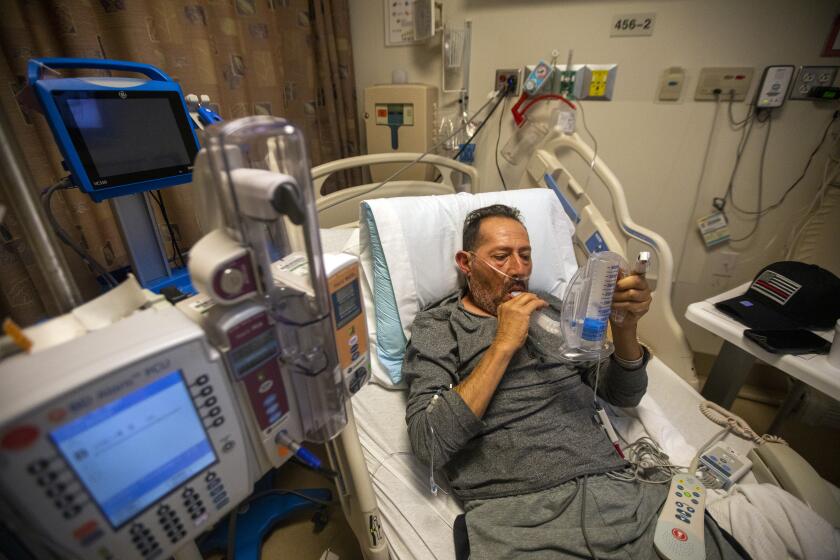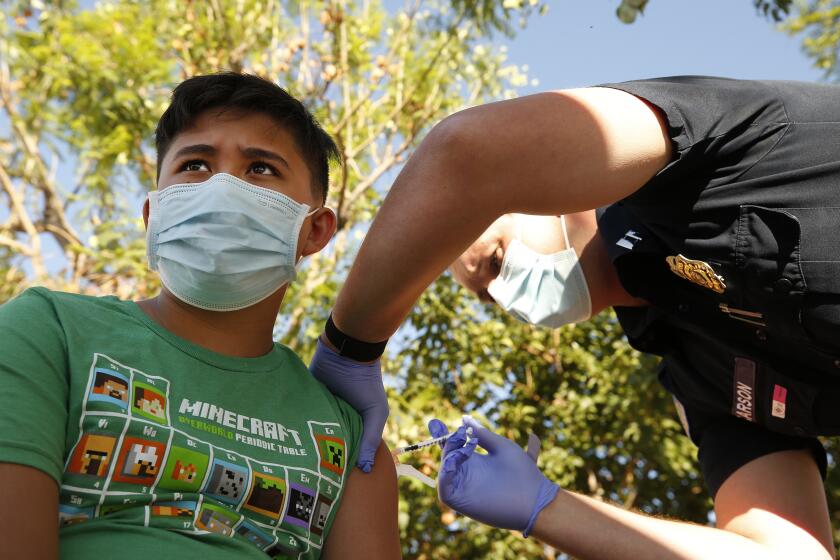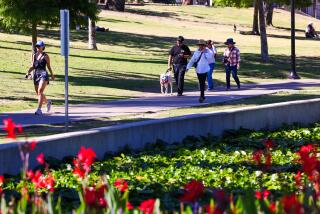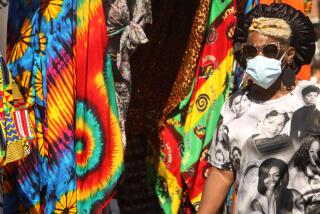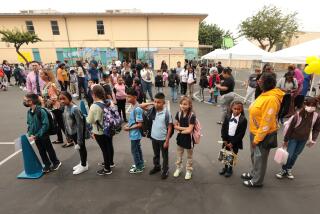L.A. COVID-19 surge slowing, but cases likely to keep rising as school begins
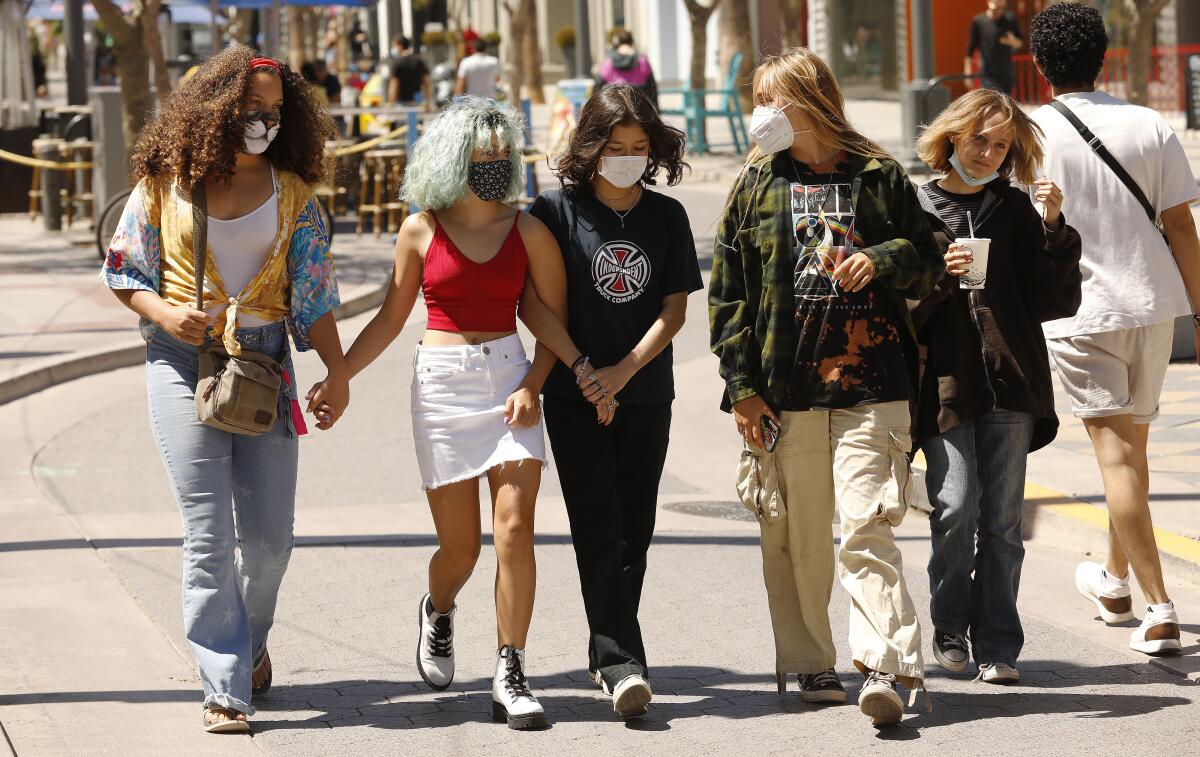
- Share via
The latest COVID-19 surge is showing some signs of slowing in Los Angeles County, but cases are likely to continue rising in the weeks ahead as the hyper-transmissible Delta variant continues to loom as a major threat, Los Angeles County’s top health official said Tuesday.
Public Health Director Barbara Ferrer said she expects recorded infections will increase in part as a byproduct of ramped-up testing when schools, colleges and universities welcome students back for the new term.
“Many of these sites have regular screening testing, many of them have a testing requirement upon entry, and that means that we’ll have tens of thousands more people getting tested every day,” Ferrer told the county Board of Supervisors.
That likely means people who otherwise wouldn’t have thought to get tested may end up finding out they have an asymptomatic infection — adding to the county’s case count.
“It does mean for the months of August and September we’re likely to see our case numbers climb,” Ferrer said.
Perhaps a more revealing metric, she said, will be the positivity rate: the proportion of conducted tests that confirm coronavirus infection.
The state has seen its total number of hospitalized coronavirus-positive patients swell from 2,981 on July 25 to 5,973 as of Sunday.
While the raw number of cases can fluctuate significantly based on tests, a low positivity rate would indicate that transmission may not be accelerating. As of Tuesday, the countywide daily test positivity rate was 4.4%.
A week ago, the rate was 6.6%.
While case numbers are still on the rise in L.A. County, there are some indications that the rate of rise may be starting to level out. During the week ending Sunday, the county reported a total of 20,979 new coronavirus cases — a modest 6.5% increase from the previous week’s total of 19,704. By comparison, that total of 19,704 was a 22% increase from the week before.
There are several factors likely contributing to the current slowdown, Ferrer said, but one that appears to be making a difference is the county’s reinstatement of a requirement in mid-July that all residents wear masks while in indoor public places.
At the time that order went into effect, Ferrer said cases countywide were doubling roughly every 10 days.
“Masking remains an effective way to reduce transmission,” she said.
L.A. County was ahead of the curve in issuing a new mask mandate. And in the weeks since, cases have climbed slower in the region than they have in the rest of the state.
For the week ending Sunday, California outside L.A. County reported 55,422 total cases — a 20% increase from the week before, according to figures Ferrer presented. The previous week’s total, 46,096, was a 57% jump from the prior week.
COVID-19 hospitalizations have essentially doubled across much of California over the past two weeks — a troubling trend officials say illustrates the pandemic’s continued potency amid an ongoing surge in infections.
In L.A. County, hospitalizations have doubled in the last 15 days, from 745 on July 24 to 1,503 on Sunday — the region’s worst number since the waning days of the devastating fall and winter surge.
Data continue to show that the vast majority of those getting infected by, and ultimately hospitalized with, COVID-19 are uninoculated.
For the week of July 31, the average coronavirus case rate among unvaccinated Californians was 33 per 100,000 residents per day, nearly five times the comparable rate of vaccinated individuals.
As of last week, the risk of being hospitalized for COVID-19 in L.A. County was 19 times higher among those who are not fully vaccinated than it is for those who are, Ferrer said.
More to Read
Sign up for Essential California
The most important California stories and recommendations in your inbox every morning.
You may occasionally receive promotional content from the Los Angeles Times.
